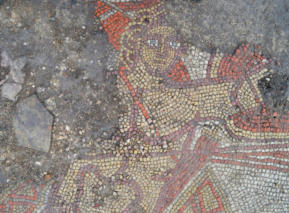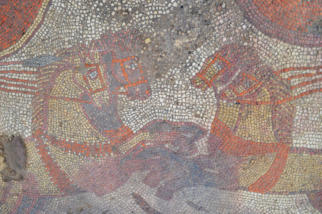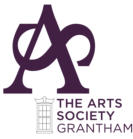Past Lectures, Study Days & Visits
2023/24 Membership year
18th June 2024
Andy McConnell
Bottoms Up! A History of Wine, its Rituals and its Vessels
This light-hearted talk examines the history of wine, an elixir that has sustained much of
humanity for almost 10,000 years. Essentially little more than fermented grape juice, this
extraordinary and contradictory liquid has caused wars and riots, has helped broker peace
and more commonly, served as an aphrodisiac. It has been personified in the form of Gods
and been the principal catalyst in civilised entertaining and dining rituals.
Bottom’s Up! traces the story of wine: from its humble beginnings in rotting grapes before
the Bronze Age to the present . It examines the extraordinary diversity of paintings and
artefacts, including drinking vessels, created by some of history’s greatest artists and
craftsmen to enhance the pleasure of wine, and to impress guests.
The talk visits the ancient societies of Egypt, Greece and Rome, travels through the Middle
Ages, the Renaissance and 18th century Britain. It culminates in the present day, when
more wine is being consumed than ever before, with its world market now worth over £100
billion.
21st May 2024
Sophie Matthews
MUSIC IN ART
So many of our historical references for musical instruments can be found in works of art.
Not only can these windows into the past show us what the instruments looked like but also
the social context in which they would have been played.
Music and different instruments also play a strong role within symbolism in art. Sophie
explores the instruments in selected works and then gives live demonstrations on replicas of
the instruments depicted.
Study Day
30th April 2024
Simon Whitehouse
The World’s Greatest Paintings: 200 Years of the National Gallery
2024 marks the bicentenary of the founding of the National Gallery. This lecture tells the
story of the establishment of the NG collection beginning in 1824 when Lord Liverpool’s
government purchased 38 paintings for £57,000 from the collection of businessman and
philanthropist John Julius Angerstein.
The paintings were initially displayed at 100 Pall Mall, Angerstein’s townhouse and by 1838,
it was decided that a purpose built building was required, giving us the William Wilkins
designed building we know and love on Trafalgar Square. During the course of the lecture
we examine some of the high (and low) points of the early years of the gallery including
suffragette sabotage, bombs and theft.
We also take a close up look at some of the original "Angerstein 38” paintings…
16th April 2024
Nirvana Romell
FRESCOES OF FLORENCE – From Giotto To Masaccio
Florence boasts a wealth of frescoes, from Giotto to Masaccio thanks to the 'original
oligarchs' (wealthy Florentine patrons and their numerous private chapels).
19th March 2024
Steve King
The Story behind the Song
Save The Last Dance For Me was recorded by the Drifters in 1960, with Ben E King on lead
vocals, but what single event in the life of one of its writers inspired the track? Was Every
Breath You Take by The Police really written as a love song? What is the truth about the
Beatles song Lucy in the Sky with Diamonds, and why did George Harrison stop composing
for three years in 1976?
We all have personal memories we associate with individual songs, but each song has its
own story. In this lecture, the real stories behind some the world’s best known songs are
revealed.
20th February 2024
Valerie Shrimplin
Art & Astronomy - Sir Christopher Wren: Architect-Astronomer
Having designed St Paul’s Cathedral and more than 50 other London Churches after the
Great Fire of London (1666), Sir Christopher Wren is better known as an architect rather
than astronomer. But, as a Professor of Astronomy for the first part of his career, much of
his architectural work still echoes his earlier astronomical and scientific ideas.
Drawing on Wren’s role as a Professor of Astronomy (and details that survive of some of his
lectures) this talk will aim to bridge the gap between the two major aspects of Wren’s career
by focussing on the astronomical elements that influenced his later architectural career,
especially the astronomical symbolism and significance of St Paul’s Cathedral and other
selected Wren churches in the City of London.
16th January 2024
Jennifer Browning
Rutland Roman Villa Mosaic
Seeing the complete picture: discoveries at a Roman villa in Rutland
A new Roman villa was discovered during lockdown in Rutland in 2020, prompting a series
of archaeological investigations, carried out primarily by the University of Leicester and
Historic England. This extraordinary site is famous for the widely publicised figured mosaic,
which depicts scenes from the mythical Trojan War. Having completed fieldwork in
September 2022, analysis is now in the early stages. This talk will describe the discovery
and place the mosaic in the wider complex, based on the evidence to date. The talk will also
discuss the artwork of the mosaic and its significance.
Achilles face Horses
Photos: Jennifer Browning
21st November 2023
James Campbell
Shepard’s Christmas
E H Shepard loved Christmas, and this lecture describes, including his own words much of
the magic and joy of successive festive seasons, from those of his own childhood to others
throughout his long life.
We see a range of artistic styles from full colour images to pen-and-ink personal Christmas
cards, with cartoons, drawings and watercolours, some featuring the iconic images from the
Wind in the Willows (the snow in the Wild Wood…) and Winnie-the-Pooh (Pooh and Piglet
from The House at Pooh Corner). Many of the images have not been published for over fifty
years.
7th November 2023
Ian Keable
Art of Trickery
This talk is on how magicians have appeared in art throughout the centuries, whether in
paintings, satirical prints or cartoons. Early artists used the magician to symbolise the
mysterious and the unknown, associating them with astrology and tarot cards. In the 16th
century, Pieter Bruegel and Hieronymus Bosch produced two of the most famous and
striking pictures of the conjurer performing the Cups and Balls trick.
The 18th and 19th century saw a proliferation in engravings and lithographs showing the
magician both indoors and on the streets. Cartoonists and satirists delighted in linking
politicians with skulduggery with images of them featuring the Three-Card Trick, Vanishing
illusions or pulling a Rabbit out of the Hat.
Study Day
24th October 2023
Sarah Burles
The Art and Artists of Kettle’s Yard
Kettle’s Yard in Cambridge has been described as “one of the country’s most intimate
and spellbinding museums, the collection of one man and his unerring eye; restorative,
homely yet life-changing”. His collection included works by Ben and Winifred Nicholson,
Christopher Wood, Alfred Wallis and Henri Gaudier-Brzeska which were carefully placed
alongside pieces of furniture, ceramics and natural objects. His curated home remains, by
and large as he left it, characterised by its unique
atmosphere, fascinating juxtapositions and personal connections.
The study day will discuss the life of Jim Ede, his collecting, his friendships with artists and
his vision for Kettle’s Yard. Two in-depth lectures will focus on artists whose work is at the
heart of this unique collection.
Lecture 1 - Jim Ede: Friend to Artists
Lecture 2 - Henri Gaudier Brzeska: Savage Messiah
Lecture 3 - Winifred Nicholson: A Life in Colour
17th October 2023
Tobias Capwell
The Scoliotic Knight: Encounters with Richard
The discovery of the grave of King Richard III in Leicester raised an army of new and
fascinating questions. The severe scoliosis exhibited by the skeleton revealed that the
twisted physique of Shakespeare’s ‘Black Legend’ was based in fact. But how could a
diminutive person, suffering from a significant spinal condition, have become a skilled
practitioner of the knightly fighting arts? How could he have worn armour and fought in three
major battles? What would his armour have looked like? How might it have disguised the
King’s condition, presenting him as a powerful warrior?
In the case of a king whose royal legitimacy was questioned by many people, how were the
visual trappings of knightly kingship used to solidify his claim? Here we encounter armour
as an expressive art-form, designed to radiate messages, justifications, proof of the
wearer’s right to rule as a king - a wielder of divine power on Earth.
19th September 2023
Pepe Martinez
Banksy – Fraud or Genius
The lecture will trace the story of Banksy’s humble beginnings as a tagger on the streets of
Bristol in the 1980’s to one of the most recognisable names in the art world. We will
examine the reasons behind his incredible rise, looking at some of his famous stunts and
discuss what his influence has been on the art market today and look at what his legacy, if
any, might be.
Friday, September 8th 2023,
Renishaw Hall, Eckington, Derbyshire
Renishaw Hall is a Grade 1 listed building, the home of the Sitwell family for nearly 400
years, which can only be visited by the official one hour Guided Tour. The surrounding
estate has award winning Gardens mainly Italianate which are open from 10.30. The scenic
lake and woodlands make for interesting walks. The Orangery houses the National
Collection of Yukkas. There is a Vineyard and the Sitwell Museum also to be explored.
The usual visitor facilities are in the Stable Courtyard. The cafe serves drinks, breakfast until
11.30, light lunches and cream teas at reasonable prices.
Web site designed, created and maintained by Janet Groome,
Handshake Computer Training.



This page is not viewable on a mobile phone
If seeing this message on a tablet you will
have to change to landscape view.
Web site and mobile pages designed, created and maintained by
Janet Groome Handshake Computer Training






















